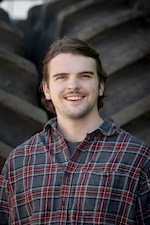As we approach the final month of the calendar year, many people begin to shift their attention to making resolutions for the new year centered around various forms of growth and self improvement. Everyone shares a similar goal in wanting to make each year better than the last. This goal stretches across people's personal lives as well as their professional lives.
And while I certainly have some personal goals for improvement next year, I'm putting a lot of focus on a professional improvement goal at the moment. This is my second year planning the National Cover Crop Summit and I want to make this fully online event even better than it was last year, and do the same the year after that, and the year after that, and the — you see where I'm going with this one.
So what steps are necessary to ensure that our event is an even bigger success this year than it was last year? Well it starts with our audience of farmers.
Last year's National Cover Crop Summit featured a star-studded lineup of speakers, some of whom were familiar to our audience already and some of whom might have been brand new to a lot of our readers, viewers and listeners.
I am a big believer in finding a balance of speakers like Jim Hoorman, who has been one of the most credible sources in the world of cover crops for multiple decades as well as speakers like Rob Dowdle — a Mississippi farmer with a heavy focus on cover crops for grazing who has just recently started to gain more attention as a source of cover crop knowledge.
Last year's event also included Erin Silva, director for the Center for Integrated Agricultural Systems at University of Wisconsin-Madison, who presented the results of a 3-year on-farm trial of intercropping cover crops into corn in the upper Midwest. The event included Matt Burkholder, an ohio no-tiller who shared soil pictures and soil health test data of 2 different management practices of fields side by side: rotational tillage vs. aggressive regenerative ag practices. We even had Rob Myers, director for the Center for Regenerative Agriculture at the University of Missouri, who discussed cover crops’ impact on soil moisture during droughts and wet periods.
All that to say — as I put together the program for the upcoming 2025 National Cover Crop Summit, which will take place March 18-20, 2025, I will be relying on feedback from all of you as well as recommendations from past speakers and cover crop experts, to put together another diverse lineup of can't-miss presentations to provide a plethora of cover crop knowledge to all in (virtual) attendance.
So if you're reading this and you have an idea for a great presentation topic, or a speaker who you think would do a great job — or maybe you want to volunteer yourself as a speaker — don't hesitate to reach out to me at mvogel@lessitermedia.com.
Otherwise, have a happy Thanksgiving, enjoy time with family and friends, and stay tuned for the full lineup of speakers which will be finalized and released in the coming weeks. We hope you'll join us for the event in March and we hope you walkaway from it with 10x the cover crop knowledge you came in with.




